Refurbishment or new build? The carbon and business case for each option.
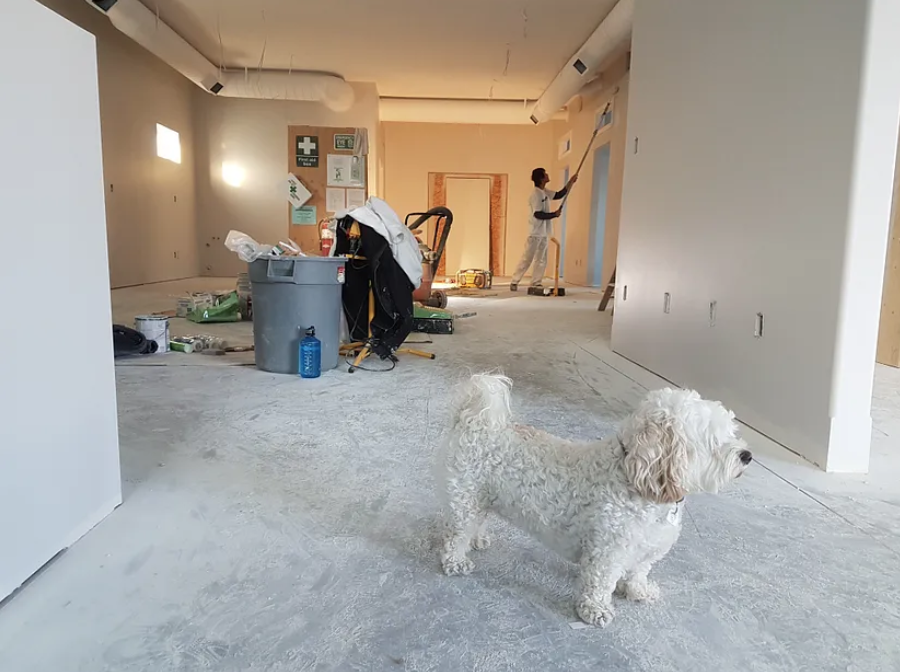
New construction has been portrayed as a sign of development and a booming economy, but in a world where resources are becoming more scarce, should we be so willing to tear down and rebuild?
Making wise decisions to cut carbon dioxide emissions in the construction industry requires an understanding of embodied and operational carbon. Let’s explore its meaning carefully.
Embodied carbon in the construction industry refers to greenhouse gas emissions from the production, delivery, installation, upkeep, and disposal of building materials. Operational carbon, on the other hand, refers to the greenhouse gas emissions brought on by energy usage in buildings.
Here are some key factors to take into account when deciding on whether to demolish or refurbish a building.
1- Environmental and social responsibility

We must now take into account how the construction sector affects the environment and adhere to the UK government’s net zero carbon regulations. The reuse and renovation of buildings in order to reduce embodied carbon is one way that developers are attempting to comply with these regulations and rules. Even if embodied carbon were lower than in new construction, it is argued that refurbishing a building may not achieve the operating emissions and social value requirements. This does not, however, negate the need to renovate a structure because the life cycle relationship between reuse and embodied carbon must be taken into account.
As per common perception, constructing a new structure will significantly lower its carbon footprint when compared to an existing structure. But even if operational emissions are decreased, creating a new structure still entails paying a hefty upfront price in terms of carbon emissions from the extraction of raw materials, transportation, and construction.
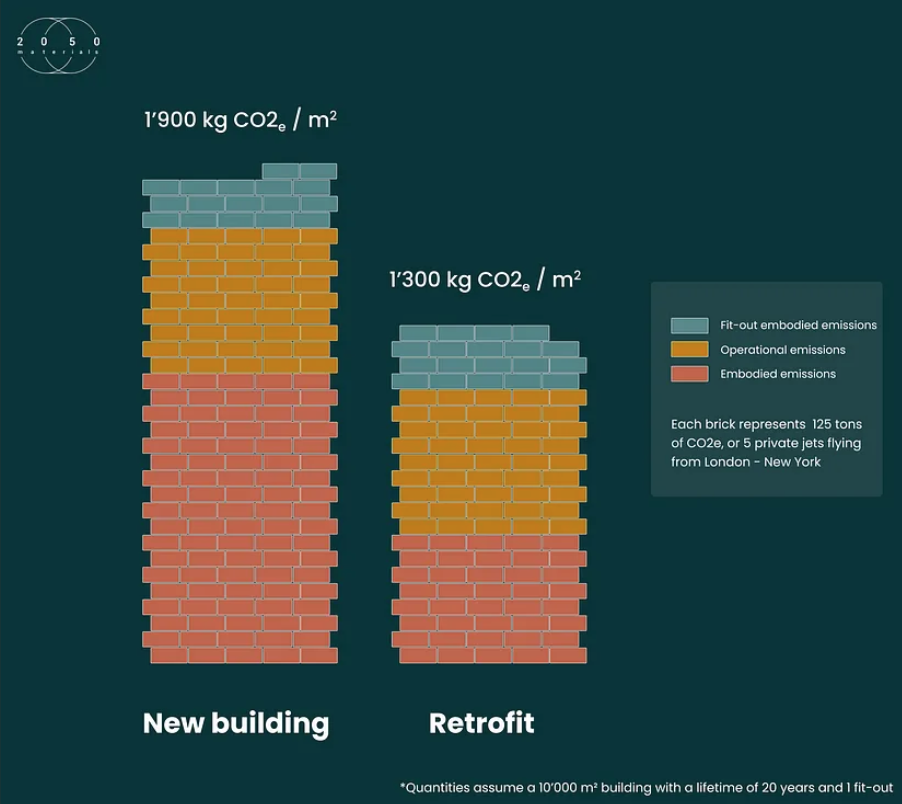
A substantial renovation of an old structure, however, can reduce operational carbon emissions without the emissions connected with constructing a new structure. Embodied carbon includes all emissions generated during a building’s construction and after it is demolished. The below figure demonstrates that the substructure, frame, upper floors, and roof of a building account for almost 60% of the embodied carbon emissions. Deep renovations should keep these components, therefore on average a rehabilitated structure has a lower carbon footprint than a freshly constructed replacement.
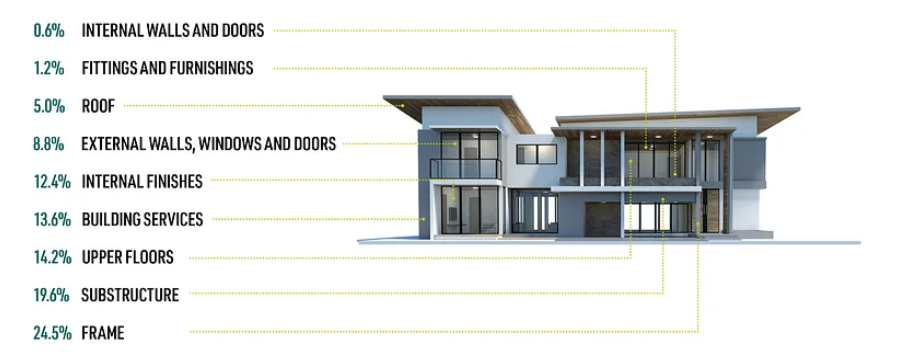
In order to attain net zero, according to research by the London Energy Transformation Initiative (LETI), a network of more than 200 professionals in the built environment, buildings will need to minimize their embodied carbon emissions in the future. Given that the embodied carbon budget for a typical commercial building is between 1,000 and 1,500 kgCO2e/m2, LETI’s suggested value of 600 kgCO2e/m2 is a challenge. The below figure illustrates how tons of concrete, steel, and aluminum are needed for structural frames and basements in new buildings, which account for nearly a third of the embodied carbon.
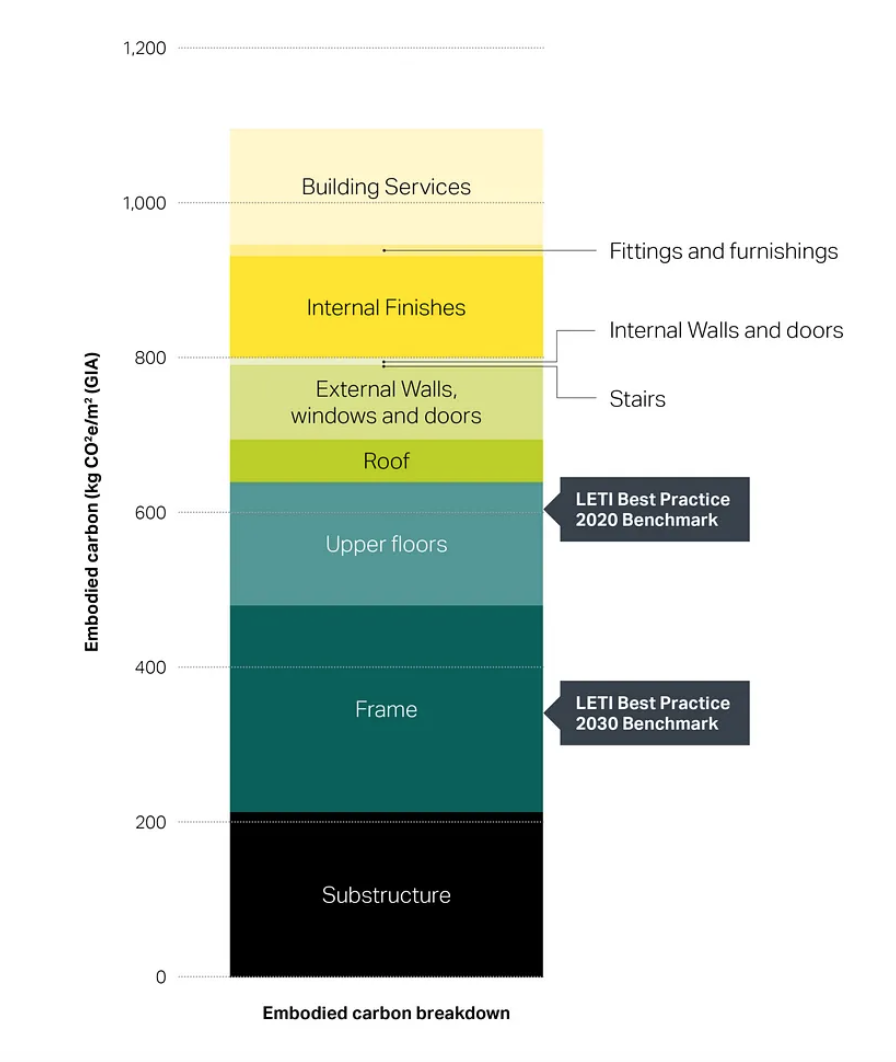
2- Building risk
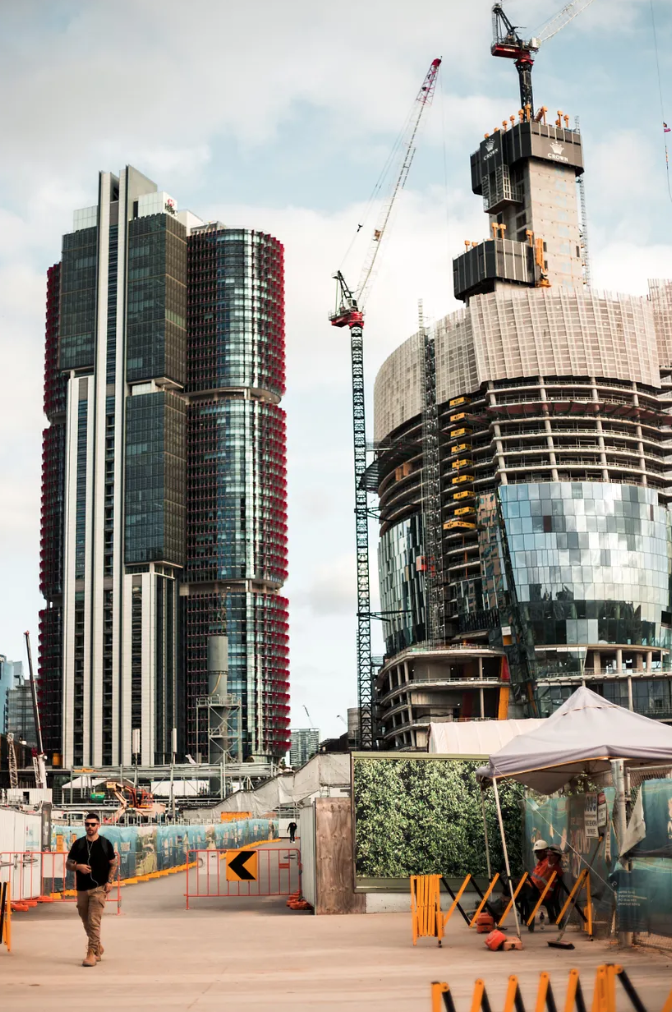
It’s crucial to keep in mind that not every old building can be repaired, and problems can arise throughout the renovation process. Physical deterioration, normal wear and tear, technological advancements, and environmental factors all contribute to obsolescence. Of course, the building is greatly influenced by its design, appearance, and social requirements.
Obsolescence will be chosen on a case-by-case basis depending on the build. The main concern would be whether the structure is appropriate for the intended use, with consideration given to things like developer options, structural soundness, material quality, and occupant safety and comfort. Developers can choose if the building is outdated or can be renovated after these regions have been examined and verified.
Minimize the embodied impacts of the core and shell of a new building by finding sustainable alternatives here.
3- Financial returns

Whether we like it or not, financial return projections have a big impact on how developers and designers make decisions. Even if the developer intends to keep the house for a while before selling it, it might be more cost-effective to demolish it and start over. Renovating, however, can be the best option if money is tight.
Additionally, the process of renovations is far shorter than that of creating new houses. When businesses are under pressure to meet deadlines or cannot afford the downtime or relocation that comes with a new development, this can be helpful. When compared to renovations, change orders and cost overruns are also far more typical during these projects.
Prioritize sustainable materials
Whether you decide to refurbish or build new, there’s a lot you can do to minimize the impacts of your project. In fact, considering sustainable materials can reduce emissions by 46% according to RMI.
Visit 2050 Materials to compare and specify the most sustainable materials, from the foundation to the finishes.
If you have a project and don’t know quite where to start, reach out to us at info@2050-materials.com and we can help you navigate material sustainability.
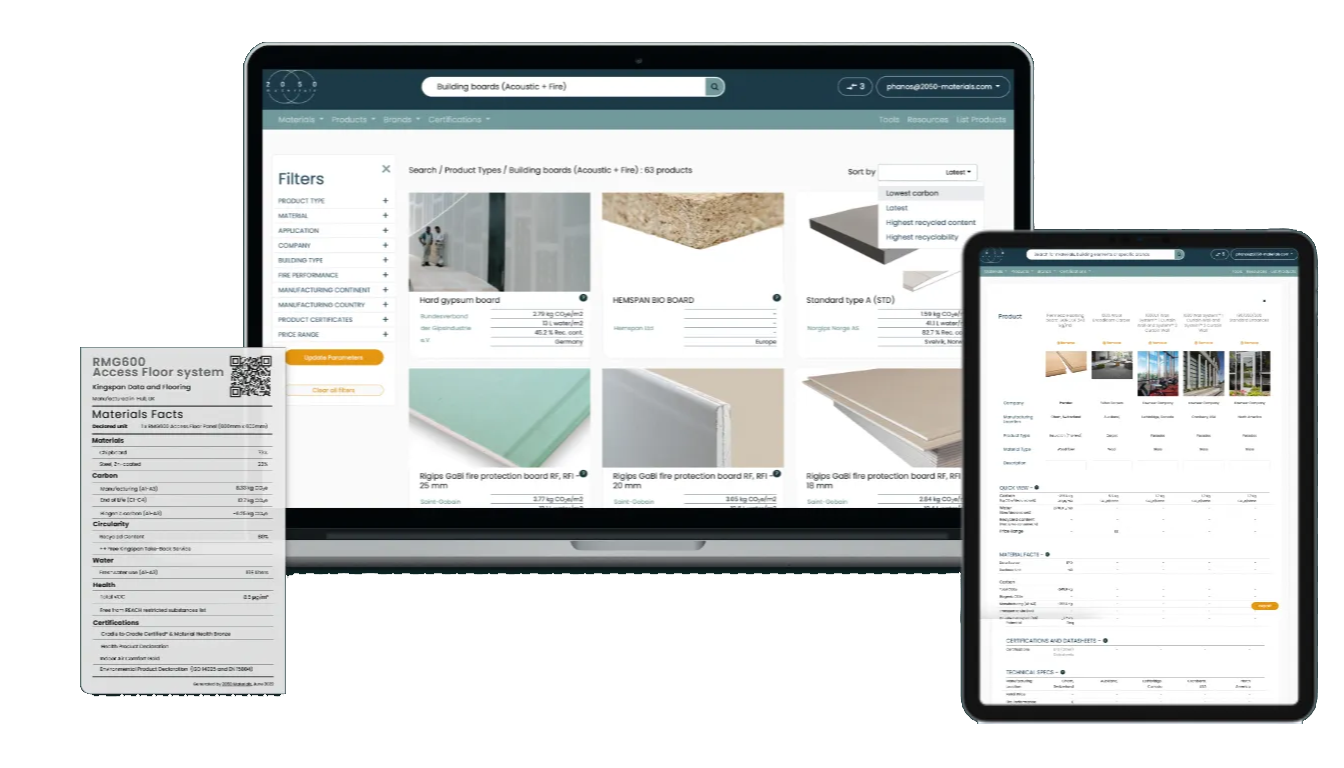
Related articles

The Most Interesting Low Carbon Products in Office Design
In this article and collection, we highlight 11 outstanding products that contribute to a lower carbon footprint in office design.
Read more
Top Low Carbon Building Boards: Performance, Benefits, and Use Cases
The building boards highlighted in this article and collection showcase low-carbon innovation in modern construction.
Read more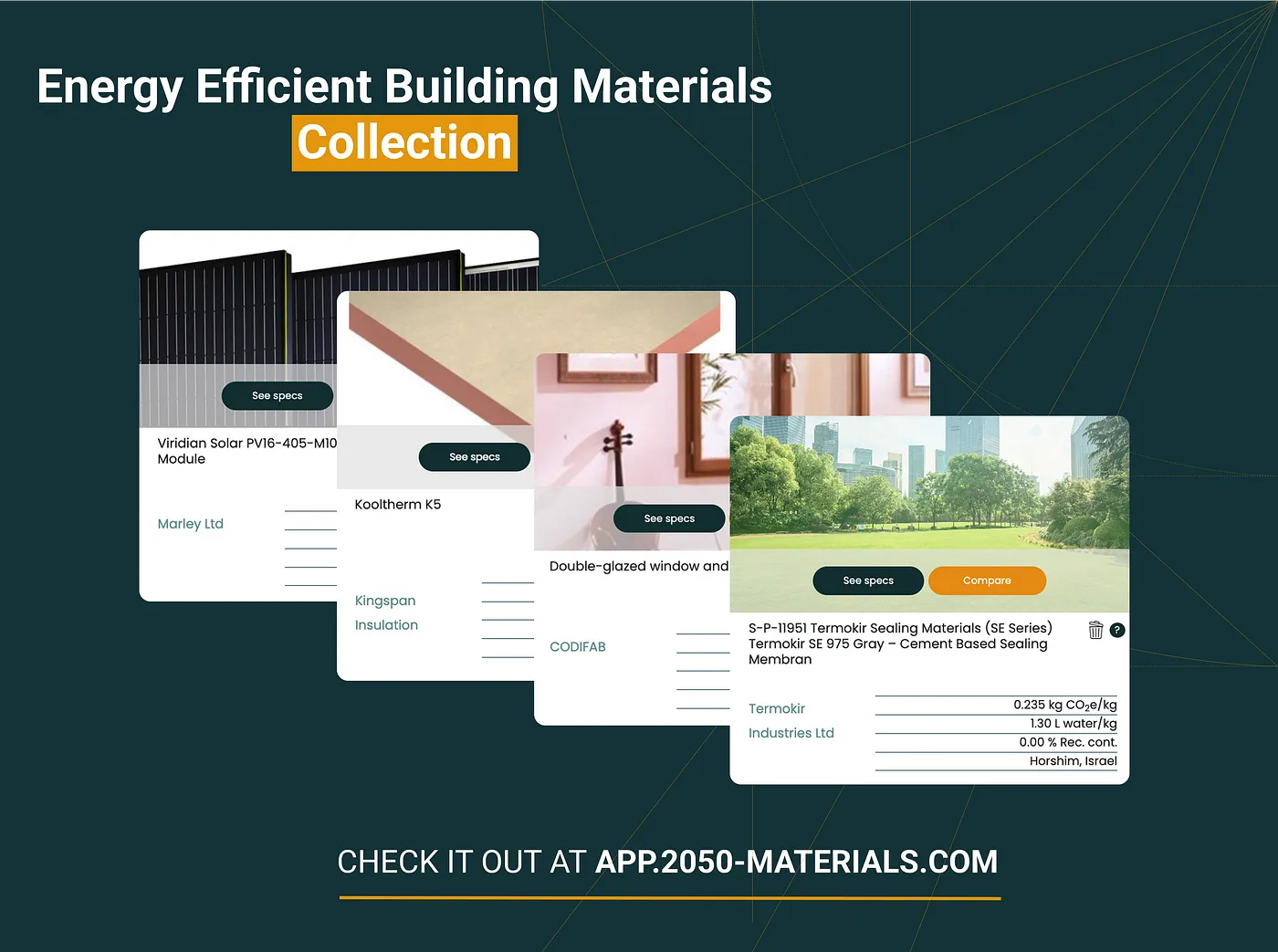
11 Interesting Energy Efficient Building Materials for Reduced Environmental Impact
Discover a collection of energy efficient building materials that not only reduce greenhouse gas emissions but also contribute to long-term durability.
Read more